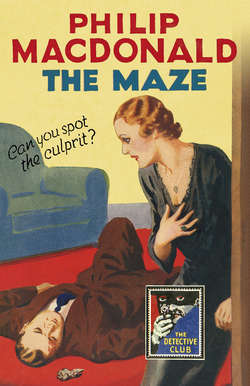Читать книгу The Maze - Julian Symons - Страница 6
INTRODUCTION
ОглавлениеTHE idea of the crime story in which the solution should be the result of perfectly rational deductions from given facts—an exercise in ratiocination, as Poe called it—was one that preoccupied writers in the ’twenties and early ’thirties, when the crime story was coming of age. It was this dream that the early Ellery Queen books tried to fulfil with their ‘Challenge to the Reader’ three-quarters of the way through; that was at the heart of John Dickson Carr’s locked room mysteries; that was approached at times by writers as various as Anthony Berkeley, Agatha Christie and C. Daly King.
The Maze, which was published in 1932, is Philip MacDonald’s contribution to this conception of the totally logical puzzle. It is, he says, ‘An Exercise in Detection’, and he claims that you are provided with all the evidence on which his detective, Anthony Gethryn, works, and from which he deduces the truth. He says more than this:
In this book I have striven to be absolutely fair to the reader. There is nothing—nothing at all—for the detective that the reader has not had. More, the reader has had his information in exactly the same form as the detective—that is, the verbatim report of evidence and question.
This is a fair story.
Does Philip MacDonald claim too much? I don’t think so. The facts are clearly laid out, and Gethryn’s deductions are admirably logical, beginning with what he calls oddities, and moving from one of these to another to build a case which—if we had spotted the oddities—we could have formulated ourselves. Upon the basis of logic, Gethryn’s case is not to be denied, although, as he acknowledges, it is a structure that can be demonstrated but not proved. A perfect crime story, then? Why no, for The Maze has the weakness inherent in that desire for a wholly logical crime story, the weakness that we take an interest in the solution to the crime but not in the people who may have committed it. Yet in its time The Maze was a notable and underrated crime story, and it remains one of the truly original experiments of the period.
Today Philip MacDonald is almost forgotten, but he and his detective Anthony Gethryn were celebrated figures in the years between the Wars. The Rasp, the first crime story he published under his own name, was an immediate success, and The Noose (he had a taste for single word titles) was the first Crime Club choice in 1930. The Evening Standard bought the serial rights, MacDonald’s sales quadrupled, and within a year the Crime Club had 200,000 members. MacDonald continued to produce successful books under several pseudonyms and a number of them were experimental in one way or another. Three of the best were Rynox, Murder Gone Mad, and X v Rex, the last of which was written under the pseudonym of Martin Porlock. The construction of these books is sometimes careless, but they all contain extremely ingenious ideas, and the desire to do something new is always apparent. Then, in the early ’thirties, MacDonald was invited to Hollywood by RKO Pictures, became a scriptwriter, and wrote little more except for the screen, although he produced in 1952 a collection of short stories called Fingers of Fear, some of which show his characteristic cleverness. As a crime novelist, however, MacDonald’s career really ended in the ’thirties. It is not surprising that he has been forgotten.
The exuberant and indefatigable American crime buff Dilys Winn recently discovered MacDonald living in the Motion Picture Retirement Home near Malibu, and talked to him about his career. She found him inclined to deprecate the books that had made his name: ‘They’re all a bit dated, aren’t they?’ The Noose he thought ‘awfully old-fashioned’, and he would probably have said the same about The Maze. Dilys Winn found conversation difficult, and from her account of the interview one gets the impression that the time when MacDonald wrote crime stories was for him an ocean and a different life away. He belonged even in appearance to that different life. For the interview he sported an ascot, carried a silver-handled cane, and had his hair precisely parted and slicked down with pomade.
He said firmly that he was born in 1900, but this would mean that his first book Ambrotox and Limping Dick, written in collaboration with his father, was published when he was twenty years old. He thought that his best book was Patrol, which is not a crime story, rated his short stories higher than his novels, and expressed his aversion to literary company. ‘Two writers in one room is too many.’
I think it must be acknowledged that The Maze, like its author, is a period piece, but it is one that must give pleasure to any reader who likes to solve a puzzle and to pit his own wits against those of the author’s detective. And there is another reason why I hope that Philip MacDonald will be pleased to see the book republished. The most wistful thing he said in the course of the interview was that the Home’s library did not contain ‘one tiny word, not one, of mine.’ At least The Maze can now find its proper place upon the shelves.
JULIAN SYMONS
1980
